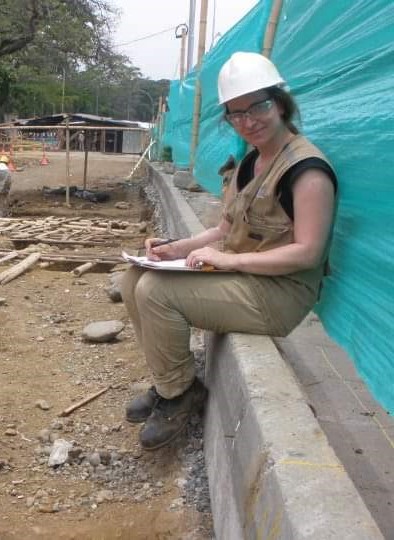 Abstract: Bogotá (Colombia) is a large city located in the high Andes at 2600 masl, lying on top of a former Pleistocene lake. The present day Bogota savannah is a flat 1.400 km2 watershed, almost completely closed, and surrounded by hills, that geologically corresponds to the Sabana Formation, composed of lagoon sediments 200 to 400 meters thick of Pleistocene-Holocene age. The lake started to dry up around 28.000 years ago, and still does, living behind large areas of seasonal flooding.
Abstract: Bogotá (Colombia) is a large city located in the high Andes at 2600 masl, lying on top of a former Pleistocene lake. The present day Bogota savannah is a flat 1.400 km2 watershed, almost completely closed, and surrounded by hills, that geologically corresponds to the Sabana Formation, composed of lagoon sediments 200 to 400 meters thick of Pleistocene-Holocene age. The lake started to dry up around 28.000 years ago, and still does, living behind large areas of seasonal flooding.
According to the archaeological finds, the region was first populated at about 12.400 B.P. by pre-ceramic hunter-gatherers. The first ceramic culture (the Herrera) might have appeared there by 400 B.C., which was followed by the later Muisca culture, which was then met by the Spanish conquest in 1536. Muisca indigenous people had a scattered settlement pattern of small family units residing among their farming plots around the remnants of the Pleistocene lake. Close proximity between people was not the rule at that time, so community ties and territorial awareness relied on a network of roads that connected small communities throughout the landscape. Even though numerous Muisca sites have been retrieved archaeologically and researched extensively, the roads that constructed the connections have not yet been clearly traced or studied. The relations that could have existed between the settlements have not been established so far, and the connections that make sense of the territory need to be determined.
“Late pre-Hispanic and colonial era roads in Bogota” is a PhD project proposal that will focus on reconstructing the road network that crossed the Bogota area in late Muisca and early Colonial times, going through the surrounding mountains, and also traversing the available passages amidst the dissecating lake. Although the traces of paths are still visible in the mountainous landscape, the roads that traversed the flooded plain are much more difficult to reconstruct, because there are few visible remains of them on the surface, and because present day Bogota expanded over them.
Methodologically, the dissertation project will be based on four pillars: study of historical cartography, historical archives search, spatial analysis of geological, geographical, and paleo-environmental variables, and field work.
The present stage of the project funded by the QRC award will be an exploratory phase aimed at establishing the availability, location and quality of the existing archival, cartographical and environmental information resources. Various sources exist, comprising Colonial era archives, paper and digital maps collections, geological and geographical information, paleo-environmental data, governmental sources and old written accounts. Since such sources are varied and might have different levels of complexity and completeness, a preliminary assessment of their characteristics is needed. A 10-week exploration and gathering of sources will be accomplished at Bogota during the summer of 2023, followed by a classification stage in which the relevance and significance of the data for the project will be assessed.
Report: pending
 Abstract: Bogotá (Colombia) is a large city located in the high Andes at 2600 masl, lying on top of a former Pleistocene lake. The present day Bogota savannah is a flat 1.400 km2 watershed, almost completely closed, and surrounded by hills, that geologically corresponds to the Sabana Formation, composed of lagoon sediments 200 to 400 meters thick of Pleistocene-Holocene age. The lake started to dry up around 28.000 years ago, and still does, living behind large areas of seasonal flooding.
Abstract: Bogotá (Colombia) is a large city located in the high Andes at 2600 masl, lying on top of a former Pleistocene lake. The present day Bogota savannah is a flat 1.400 km2 watershed, almost completely closed, and surrounded by hills, that geologically corresponds to the Sabana Formation, composed of lagoon sediments 200 to 400 meters thick of Pleistocene-Holocene age. The lake started to dry up around 28.000 years ago, and still does, living behind large areas of seasonal flooding.